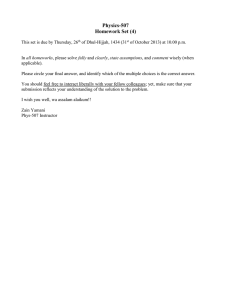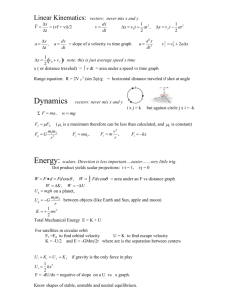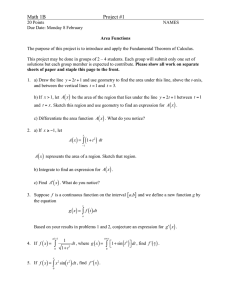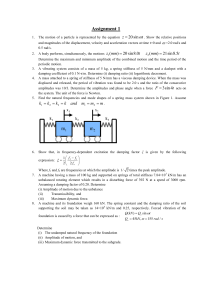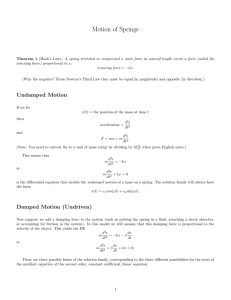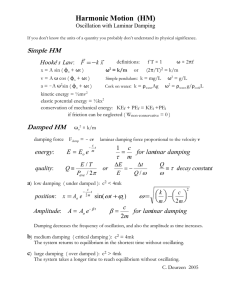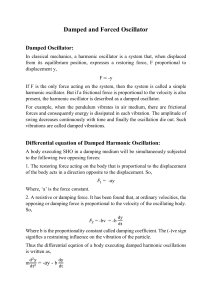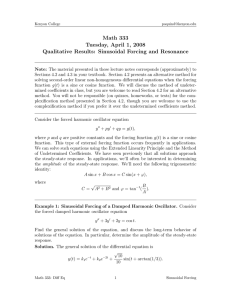PHYS-1500 PHYSICAL MODELING ...
advertisement
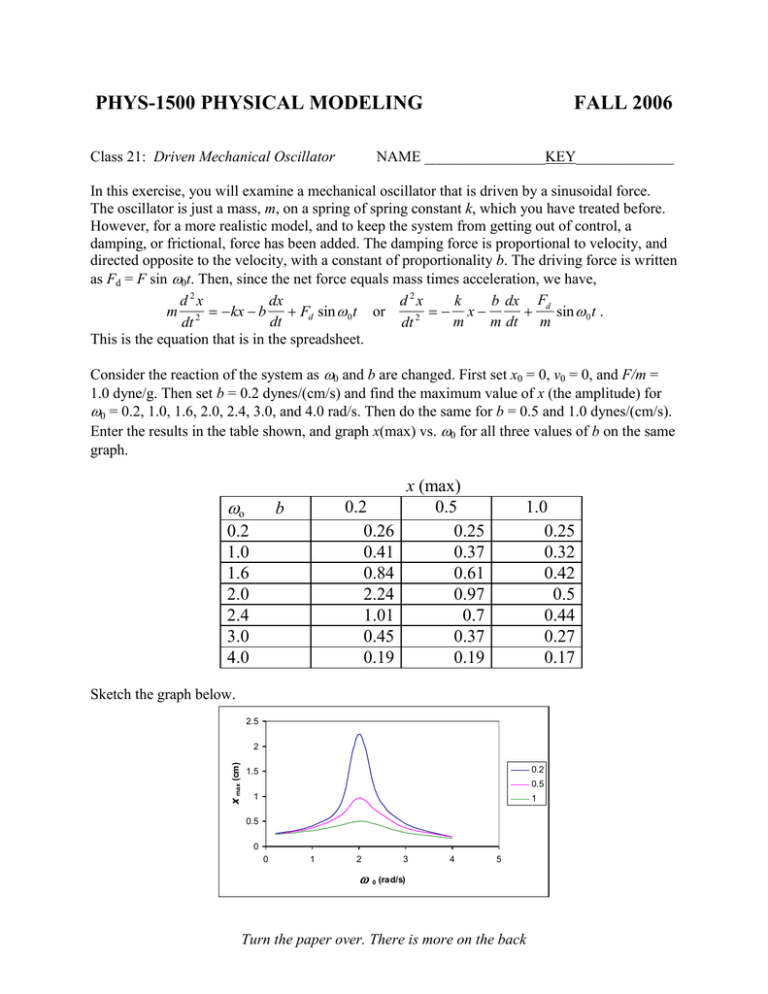
PHYS-1500 PHYSICAL MODELING Class 21: Driven Mechanical Oscillator FALL 2006 NAME ________________KEY_____________ In this exercise, you will examine a mechanical oscillator that is driven by a sinusoidal force. The oscillator is just a mass, m, on a spring of spring constant k, which you have treated before. However, for a more realistic model, and to keep the system from getting out of control, a damping, or frictional, force has been added. The damping force is proportional to velocity, and directed opposite to the velocity, with a constant of proportionality b. The driving force is written as Fd = F sin 0t. Then, since the net force equals mass times acceleration, we have, d2x dx d2x k b dx Fd m 2 kx b Fd sin 0 t or x sin 0 t . 2 dt m m dt m dt dt This is the equation that is in the spreadsheet. Consider the reaction of the system as 0 and b are changed. First set x0 = 0, v0 = 0, and F/m = 1.0 dyne/g. Then set b = 0.2 dynes/(cm/s) and find the maximum value of x (the amplitude) for 0 = 0.2, 1.0, 1.6, 2.0, 2.4, 3.0, and 4.0 rad/s. Then do the same for b = 0.5 and 1.0 dynes/(cm/s). Enter the results in the table shown, and graph x(max) vs. 0 for all three values of b on the same graph. o x (max) 0.5 0.25 0.37 0.61 0.97 0.7 0.37 0.19 0.2 0.26 0.41 0.84 2.24 1.01 0.45 0.19 b 0.2 1.0 1.6 2.0 2.4 3.0 4.0 1.0 0.25 0.32 0.42 0.5 0.44 0.27 0.17 Sketch the graph below. 2.5 x max (cm) 2 0.2 1.5 0.5 1 1 0.5 0 0 1 2 3 4 5 0 (rad/s) Turn the paper over. There is more on the back Now set F/m = 0, and x0 = 2.0 cm. Set b = 0.2 and sketch the graph of x vs. t. Then do the same for b = 0.5 and 1.0. b = 0.2 2.5 2 1.5 x (cm) 1 0.5 0 -0.5 0 5 10 15 20 25 30 35 20 25 30 35 20 25 30 35 -1 -1.5 -2 t (s) b = 0.5 2.5 2 1.5 x (cm) 1 0.5 0 -0.5 0 5 10 15 -1 -1.5 -2 t (s) b = 1.0 2.5 2 x (cm) 1.5 1 0.5 0 0 5 10 15 -0.5 -1 t (s)


